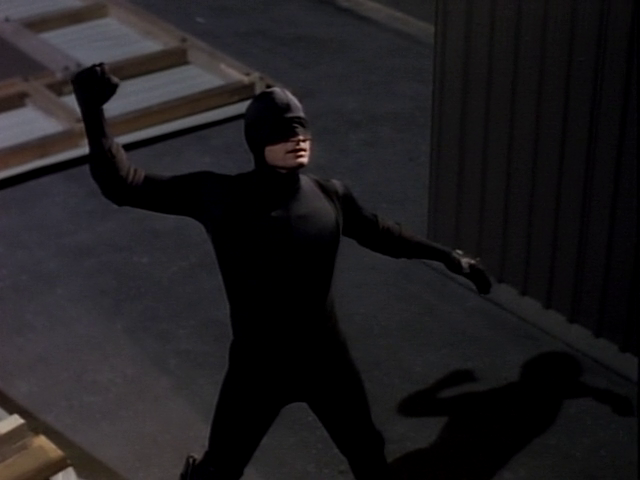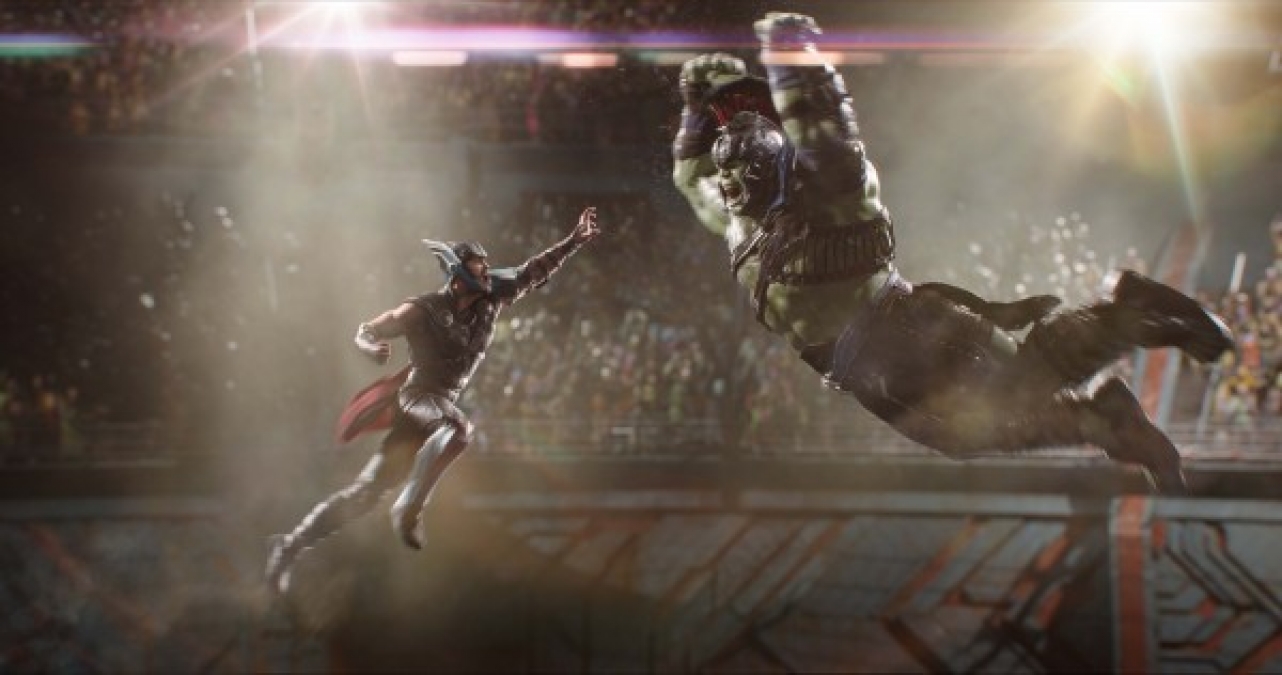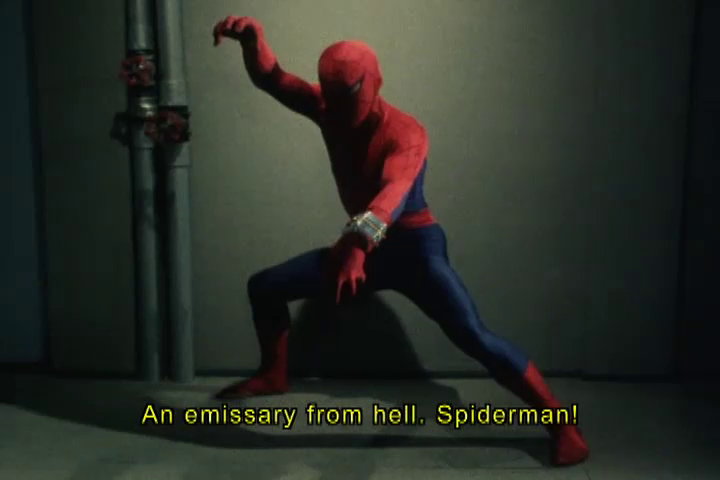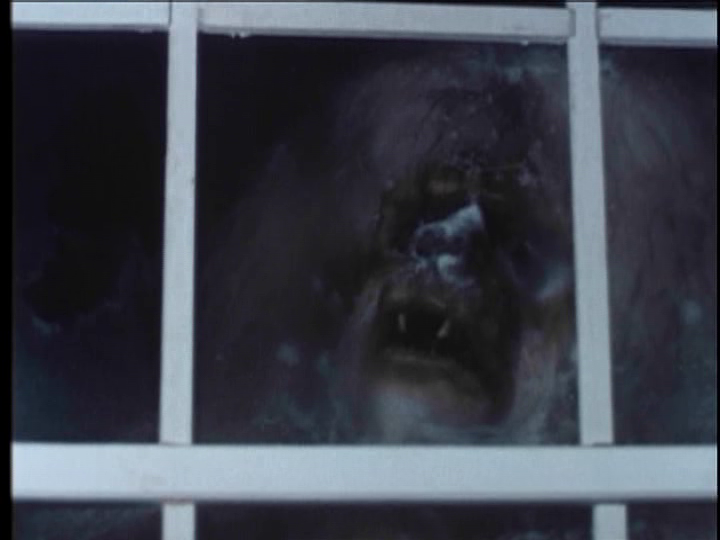With the ratings success of The Incredible Hulk Returns it was a no-brainer that NBC would want another Marvel Team-up, despite the fact that the previous film failed at its primary mission which was to serve as a backdoor pilot for a Thor series, but if at first you don’t succeed try, try again. This motto would lead the network's attempt to use the Hulk television property to spin off everyone’s favourite blind superhero into his own series, but could this work where their Thor attempt failed?
Following the events of The Incredible Hulk Returns, we find a despondent David Banner (Bill Bixby) quitting his most recent crappy menial labour job, due to some inexplicably bullying, and moving to the “big city” but this will not be New York City, which is where one would expect to encounter Daredevil and the Kingpin – not that this show ever calls him by his comic book nom-de-plume – as this movie was shot on location in Vancouver, British Columbia, Canada, which has a rather distinct look and hard to disguise, and we even get a character in this movie mentioning that he liked to look out at the mountain view, so I’ll give the filmmakers credit for at least not trying to sell this as New York, but that one little change from the source material does cascade throughout this production, making it not only a poor adaptation of the comic book but also giving it an overall “for the cheap” feel to the proceedings.
Clearly, tens of dollars were spent on Daredevil’s Radar-Sense.
The plot gets going when two crooks working for crime boss Wilson Fisk (John Rhys-Davies) make their getaway after a jewelry store robbery, via the subway because that seems sane, they then decide that this would be an opportune time to commit a little sexual assault. As luck would have it, Banner happens to be aboard that particular subway car and when he tries to intervene this expectedly results in a transformation into The Hulk (Lou Ferrigno), but when the cops later find a half-naked Banner in the subway tunnel he is arrested and hauled off to jail. Things get worse when the woman, Ellie Mendez (Marta DuBois), the one who had been assaulted, later fingers Banner as her attacker and even claims that the other two men were trying to help her. Now it is up to blind attorney Matt Murdock (Rex Smith) to uncover the truth, and he does have one advantage in that area, him being Daredevil and all he has the ability to detect lies simply by listening to a person’s heartbeat and it’s quite clear to him that Ellie's testimony is being coerced by the minions of the Kingpin, thus Matt Murdock must don his costume and take the fight to the top of Fisk Tower.
Note: Due to an upcoming role John Rhys-Davies was unable to shave his head but he was more than willing to wear a bald cap, unfortunately, the studio didn’t care enough so we got a Kingpin with hair and questionable taste in eyewear.
One aspect of this film that should be mentioned is that at no point does the Incredible Hulk stand trial and, in fact, the idea of the Hulk actually going on trial was never even discussed by the filmmakers, it was simply a very catchy title and as it did star Marvel Comics’ supreme trial lawyer Matt Murdock why not go for a nice dramatic title, even if we the viewers are left disappointed, and boy will comic book fans be disappointed. It is very little in this movie that even remotely resembles the characters from the Daredevil comics, with his classic red costume being swapped out for a black ninja get-up being only one of many notable changes. In the pages of the comic Matt is aided in his law firm by Foggy Nelson and Karen Page while in this movie his associates are Al Pettiman (Richard Cummings Jr.) and Christa Klein (Nancy Everhard) which is, once again, probably an example of the bizarre world of rights issues where a studio has the rights to some characters from the books but not others. This movie also decided to have Daredevil wearing his black costume and the stated reason for this was that the producers believed that an all-red suit would not translate well on screen and that a black suit would look better for television, clearly, they were wrong. That this colour of costume has now been made retroactively canon does not change how bad it looks here.
He looks more like he’s trying out for American Ninja III than he is playing Daredevil.
We also don’t get the promised “Trial of the Incredible Hulk” because Banner refuses to testify in court due to his fears that the stress of prosecution could cause him to “Hulk Out” but we do get to see what this would look like in a dream sequence, sadly, seeing the Hulk tear apart a courtroom and choke out the prosecuting attorney was the highlight of this film but being it doesn’t actually happen the film loses whatever points it may have gained from such an awesome spectacle. The rest of the movie deals with Wilson Fisk trying to consolidate the various criminal syndicates under his stalwart leadership, which he thinks can be accomplished simply by killing Daredevil and he even calls his videotape of the event “his resume” but I can’t see any criminal organization handing over control of their enterprises to man simply for beating up a guy in black pyjamas. Things get even more depressing when Daredevil shows up alive, having been rescued by the Hulk, to crash Fisk’s pitch meeting but then lets Fish getaway on the slowest moving escape craft in the history of cinema. Daredevil literally waves his fists in frustration as Fisk’s heli-scooter glides past him at whopping two miles an hour.
This is what happens when you shop at ACME’s bargain-basement warehouse.
Stray Observation:
• What kind of idiot would commit a jewelry heist and while escaping stop to assault a woman on a subway train? Then again, this heist had the crooks don their masks after entering the jewelry store, making the mask rather pointless as the security cameras would have already captured their faces. Clearly, neither the Kingpin nor his minions are all that bright.
• Nancy Everhard would star in another Marvel movie this very same year, co-starring with Dolph Lundgren in The Punisher.
• After an attempt on her life, Ellie Mendez is moved to a secure wing of the hospital, but it’s a ground-floor room with a sliding patio door, do they not know what the word “secure” means?
• If Daredevil wanted to keep the fact that he’s blind maybe he shouldn’t have included a blindfold as part of his costume.
• Daredevil unmasks himself to Banner, but Banner doesn’t reveal the fact that he’s the Hulk, which makes Banner a bit of a dick.
• There is a surprisingly high kill count for our heroes in this film, Daredevil electrocutes a fake nurse and Hulk electrocutes two thugs.
• In a dream sequence Stan Lee makes an appearance as a jury foreman, making this his first ever cameo in a Marvel Comics adaptation, but far from his last.
• That sequence is also the only time in the history of "The Incredible Hulk" live-action television series that we see the Hulk in his trademark purple pants.
“You're out of order! The whole trial is out of order! Hulk Smash!”
There are a few decent moments to be found within The Trial of the Incredible Hulk's short running time, with the scenes of Banner and Matt Murdock bonding over their similar backstories are particularly nice, but the action on display is poorly executed and neither Rex Smith nor his stuntman had the ability to depict the awesome fighting style of Daredevil that one would have hoped to see and I could point out a dozen other Cannon films that managed to pull off much better martial arts sequences on a similar budget than this thing. What’s even stranger is the film’s final act doesn’t even include the Hulk, we get Banner ushering Ellie Mendez out of Fisk Tower and there is no Hulking out, instead, we get Rex Smith punching a few henchmen before he watches Fisk escape.
“I’ll get you next time, Gadget!”
As in the case of The Incredible Hulk Returns, this movie was a ratings success for the Network but like that film, it also failed at its primary job of being a backdoor television pilot for a spinoff series, which is something we can all be grateful for because seeing Rex “Street Hawk” Smith as Daredevil on a weekly basis may have resulted in human sacrifice, dogs and cats living together and mass hysteria. Good or bad it is fun to look back at some of these Marvel projects and if anything positive can be said about the Marvel entry it's that John Rhys-Davies looked to be having a helluva good time and that's something we can all appreciate and enjoy.








































